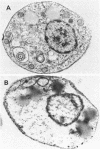Abstract
The antiprotozoal activity of chlorpromazine against the pathogenic protozoan Leishmania donovani, in both its amastigote and promastigote stages, was characterized. Chlorpromazine at concentrations greater than or equal to 3.12 micrograms/ml (9.8 X 10(-6) M) produced a significant reduction in viable promastigotes. The minimal protozoacidal concentration for promastigotes, defined as that concentration which produced greater than or equal to 90% reduction in viable parasites after 18 h, was 13.8 micrograms/ml. The results were similar when promastigote viability was assessed by flagellar motility or by the ability of drug-exposed or control promastigotes to incorporate [3H]uridine and [3H]leucine. Exposure of promastigotes to 50 micrograms of chlorpromazine per ml reduced O2 consumption by 87% within 30 min and immobilized 97% of parasites. Morphological disruption of promastigotes was observed by electron microscopy. The mean minimal protozoacidal concentration of chlorpromazine for amastigotes was 13.2 micrograms/ml. Chlorpromazine given orally (20 mg/kg per day for 14 days) reduced the parasite burden in L. donovani-infected hamsters by 64.2% (P less than 0.01) as measured by the number of amastigotes in touch preparations of livers and by 67.9% (P = 0.03) as measured by the number of promastigotes derived from homogenates of spleens. This dose is ca. 10-fold greater than that tolerated by patients being treated for psychiatric illness. Although chlorpromazine will probably not be useful in the treatment of human visceral leishmaniasis, the data suggest that less-toxic phenothiazines might prove to be effective.
Full text
PDF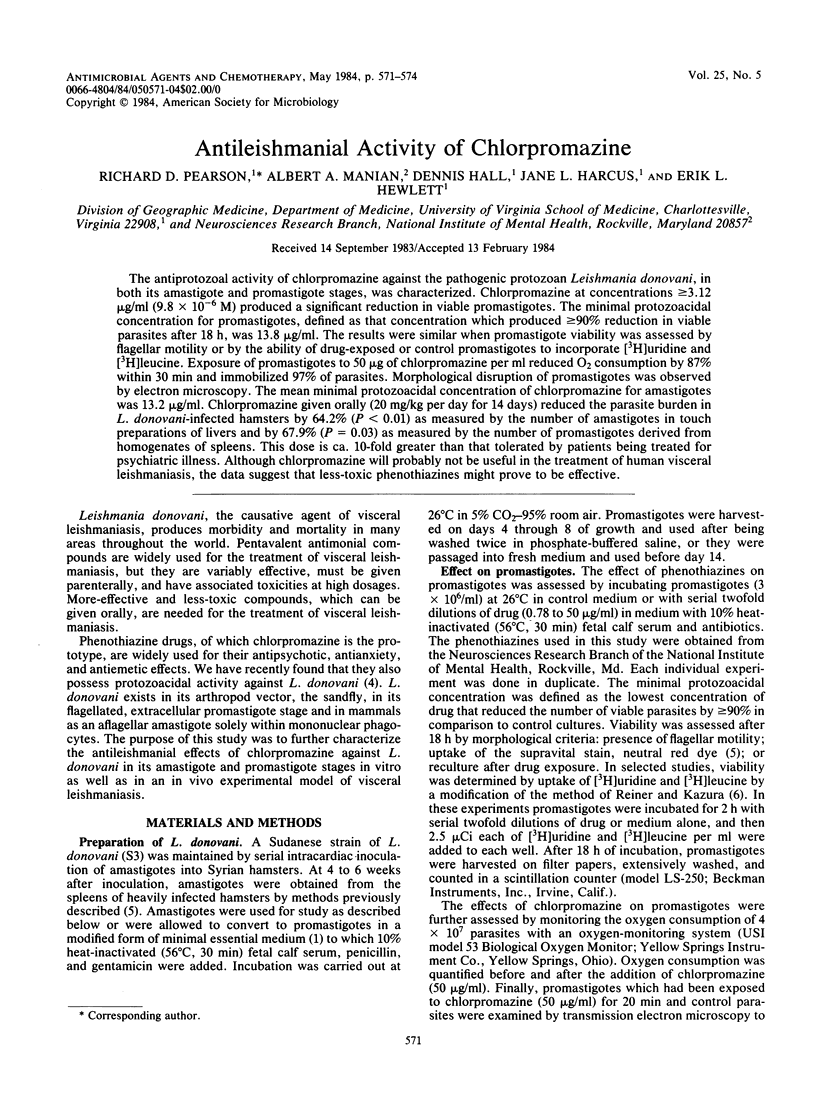
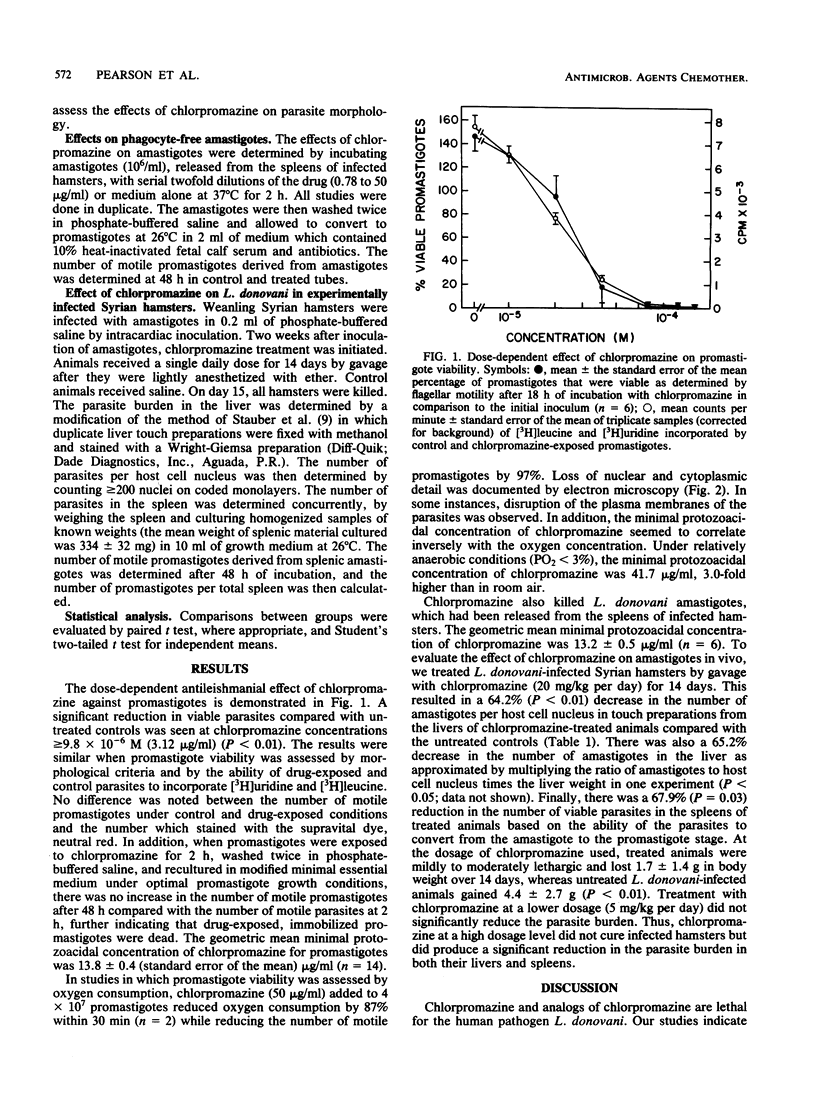
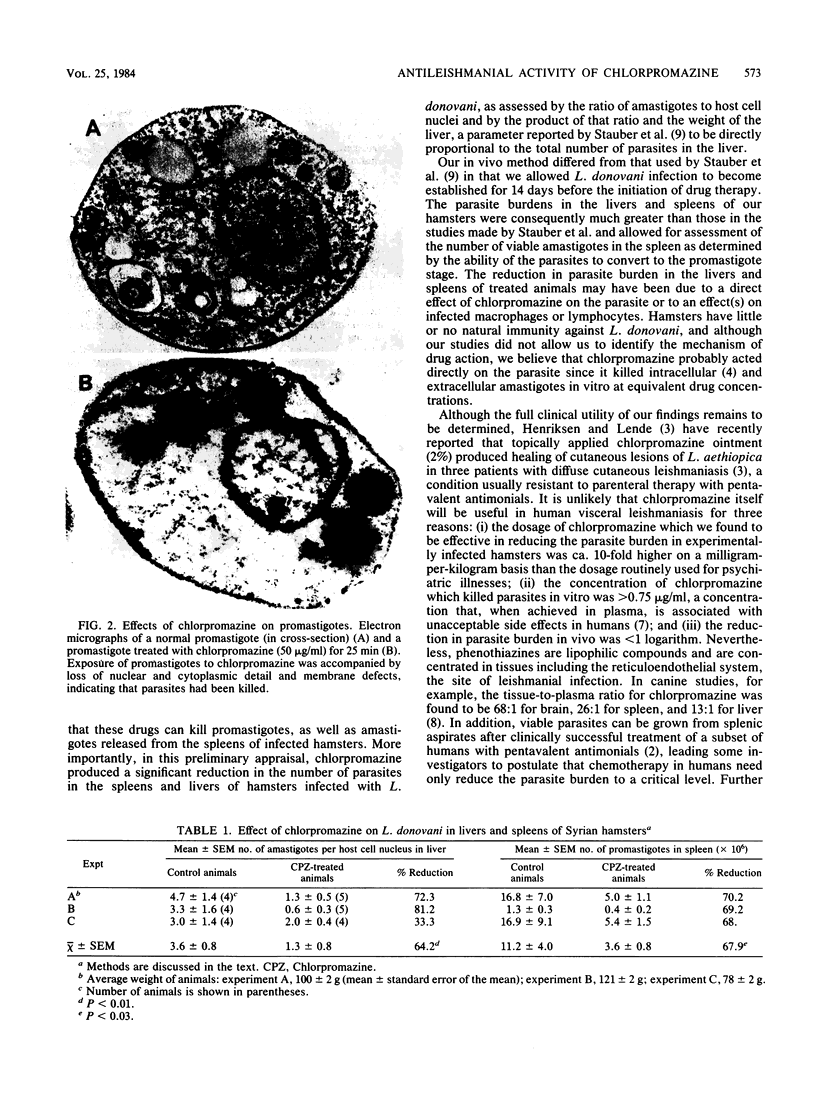
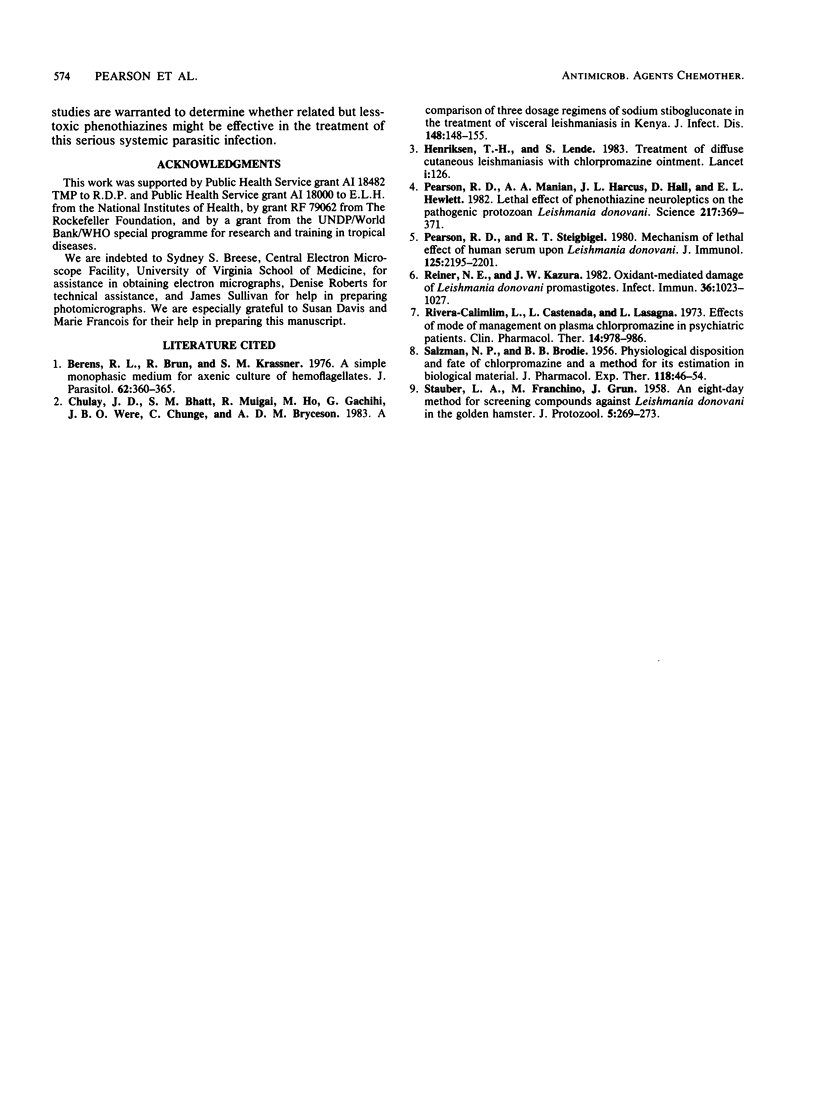
Images in this article
Selected References
These references are in PubMed. This may not be the complete list of references from this article.
- BRODIE B. B., SALZMAN N. P. Physiological disposition and fate of chlorpromazine and a method for its estimation in biological material. J Pharmacol Exp Ther. 1956 Sep;118(1):46–54. [PubMed] [Google Scholar]
- Berens R. L., Brun R., Krassner S. M. A simple monophasic medium for axenic culture of hemoflagellates. J Parasitol. 1976 Jun;62(3):360–365. [PubMed] [Google Scholar]
- Chulay J. D., Bhatt S. M., Muigai R., Ho M., Gachihi G., Were J. B., Chunge C., Bryceson A. D. A comparison of three dosage regimens of sodium stibogluconate in the treatment of visceral leishmaniasis in Kenya. J Infect Dis. 1983 Jul;148(1):148–155. doi: 10.1093/infdis/148.1.148. [DOI] [PubMed] [Google Scholar]
- Henriksen T. H., Lende S. Treatment of diffuse cutaneous leishmaniasis with chlorpromazine ointment. Lancet. 1983 Jan 15;1(8316):126–126. doi: 10.1016/s0140-6736(83)91769-5. [DOI] [PubMed] [Google Scholar]
- Pearson R. D., Manian A. A., Harcus J. L., Hall D., Hewlett E. L. Lethal effect of phenothiazine neuroleptics on the pathogenic protozoan Leishmania donovani. Science. 1982 Jul 23;217(4557):369–371. doi: 10.1126/science.6124040. [DOI] [PubMed] [Google Scholar]
- Pearson R. D., Steigbigel R. T. Mechanism of lethal effect of human serum upon Leishmania donovani. J Immunol. 1980 Nov;125(5):2195–2201. [PubMed] [Google Scholar]
- Reiner N. E., Kazura J. W. Oxidant-mediated damage of Leishmania donovani promastigotes. Infect Immun. 1982 Jun;36(3):1023–1027. doi: 10.1128/iai.36.3.1023-1027.1982. [DOI] [PMC free article] [PubMed] [Google Scholar]
- Rivera-Calimlim L., Castañeda L., Lasagna L. Effects of mode of management on plasma chlorpromazine in psychiatric patients. Clin Pharmacol Ther. 1973 Nov-Dec;14(6):978–986. doi: 10.1002/cpt1973146978. [DOI] [PubMed] [Google Scholar]



